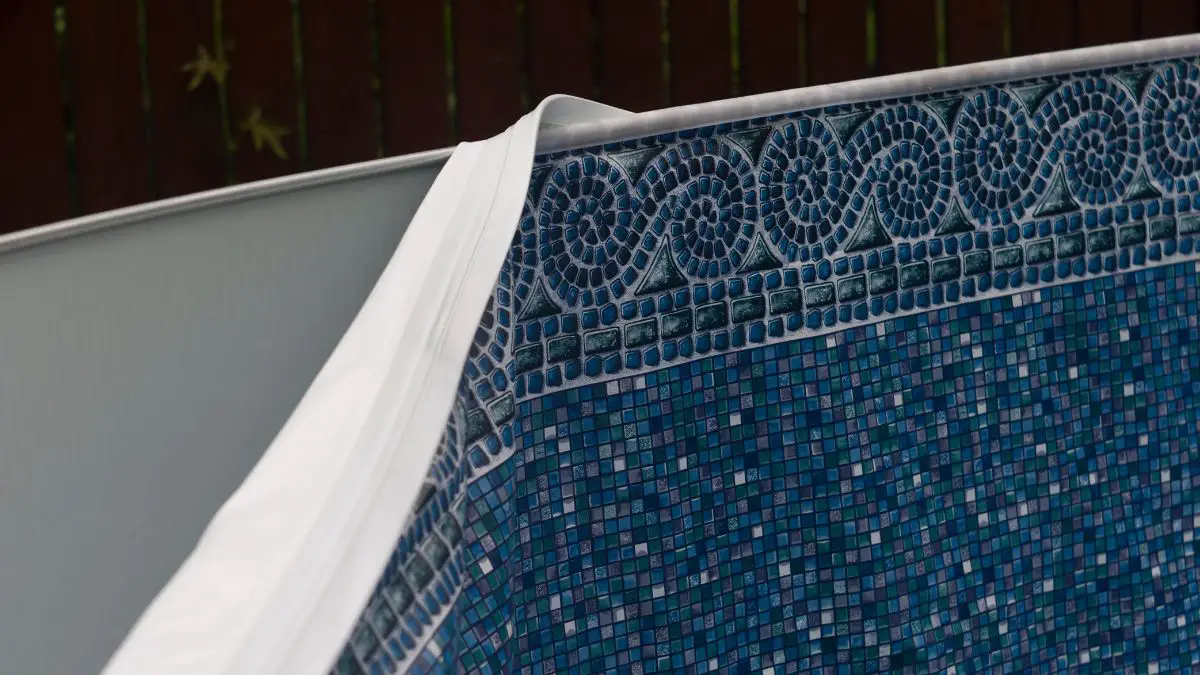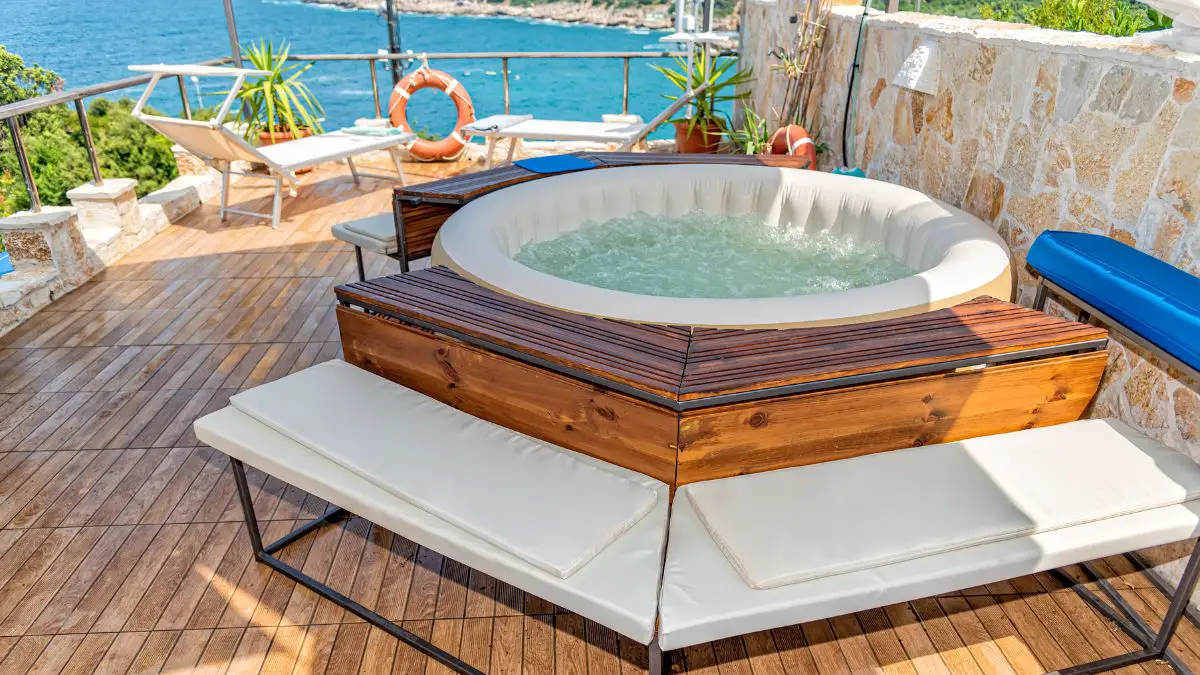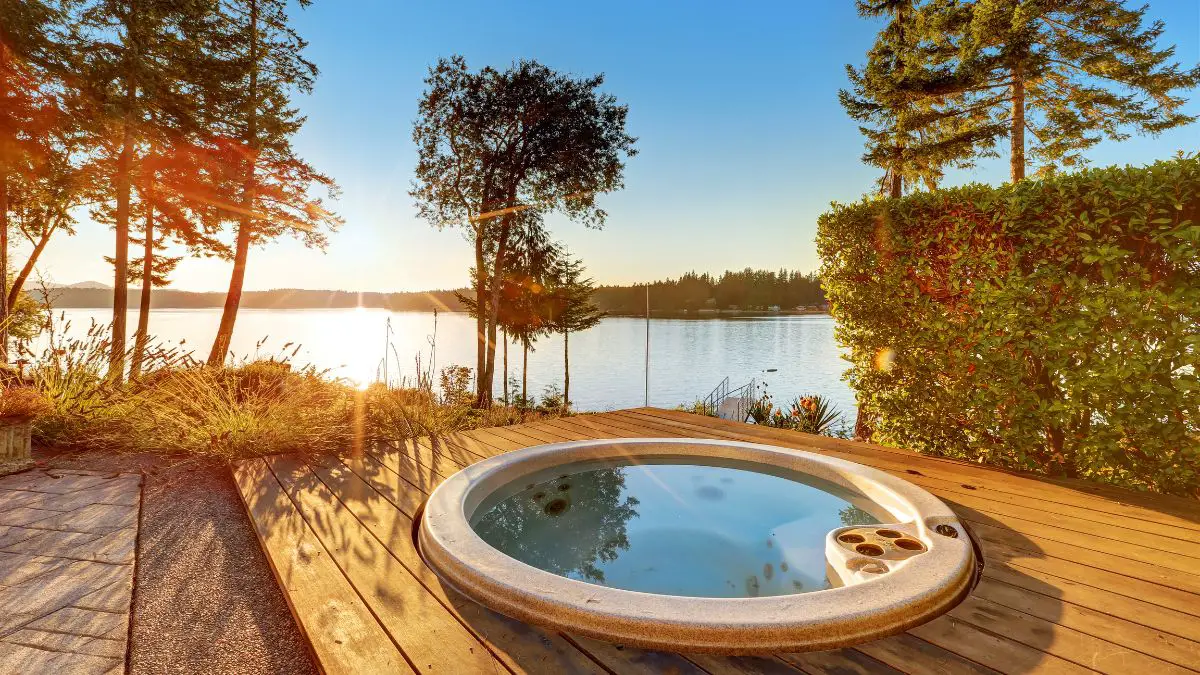You glance out your window and there it is – your once sparkling blue pool water has taken on an unsettling green hue. Immediately, questions flood your mind. Is green pool water safe? Can you swim in green pool water? These are valid concerns and understanding the implications of swimming in a green pool is crucial for your health and safety concerns.
Swimming in a green pool is generally unsafe due to the presence of algae, which can harbor harmful bacteria and create slippery surfaces. To ensure your pool is safe, maintain regular cleaning, balance chemical levels, and monitor for signs of algae growth.
You might be tempted to dive right in, especially on a hot summer day. But hold on! That green tint is a telltale sign of underlying issues that need your special attention. The color change is often due to the presence of algae in entire pools, a common problem that can turn your pool into a green, murky mess.
But it’s not just about aesthetics. The health risks of green pools can be significant. From minor skin irritations to more serious infections, swimming in a pool teeming with algae and bacteria is a risk you don’t want to take.
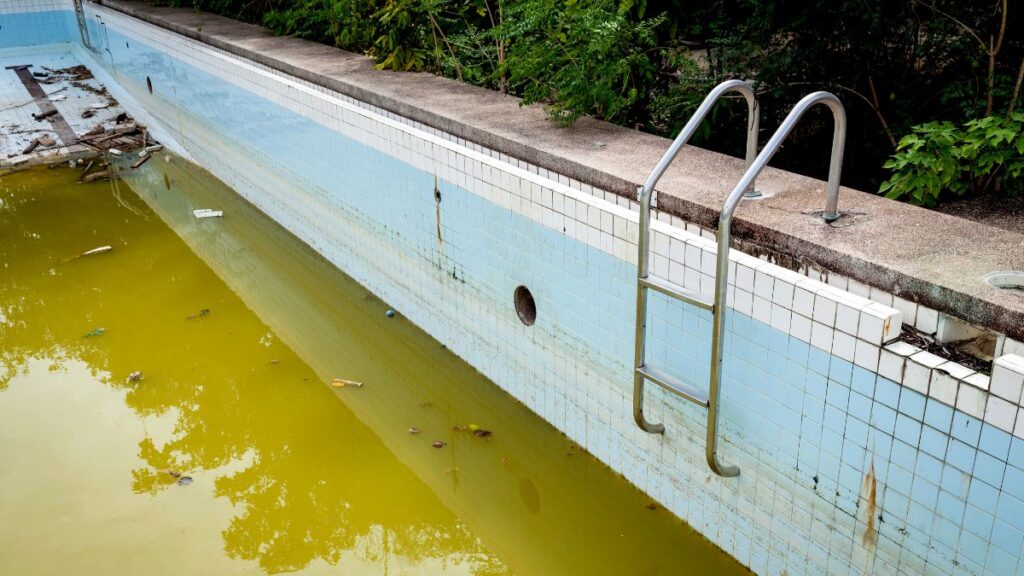
Understanding Green Pools
You’ve seen it, that unsettling green hue that sometimes takes over your pool. It’s not just an eyesore; it’s a sign that something’s off balance in your pool’s ecosystem. But what exactly causes a pool to turn green? Let’s dive in and find out.
The primary culprit behind your pool’s green transformation is a tiny organism known as algae. These microscopic plants thrive in water and, given the right conditions, can rapidly multiply, turning your pool into their personal playground.
Algae in pools are not just a cosmetic issue. They can clog your pool filters, making your pool circulation system work overtime. They can also make the pool surfaces slippery, posing a safety risk.
But how does algae end up in your pool in the first place? Well, they are pretty much everywhere – in the air, in the soil, and even on your swimwear. They can easily find their way into your pool, and once they do, they can quickly take over if the conditions are right.
Here are some factors that can contribute to algae growth:
- Insufficient Chlorine Levels: Chlorine is a sanitizer that kills algae and other bacteria in pool water. When the chlorine levels in your pool drop, it creates an inviting environment for algae to grow.
- Poor Pool Maintenance: Regular cleaning and maintenance are crucial in preventing algae growth. This includes brushing the pool walls with a pool brush, vacuuming, and maintaining the pool circulation system.
- Imbalanced Pool Chemistry: Apart from chlorine, other chemical levels in your pool can affect algae growth. This includes the pH level, alkalinity, and calcium hardness. An imbalance in these levels can promote algae growth.
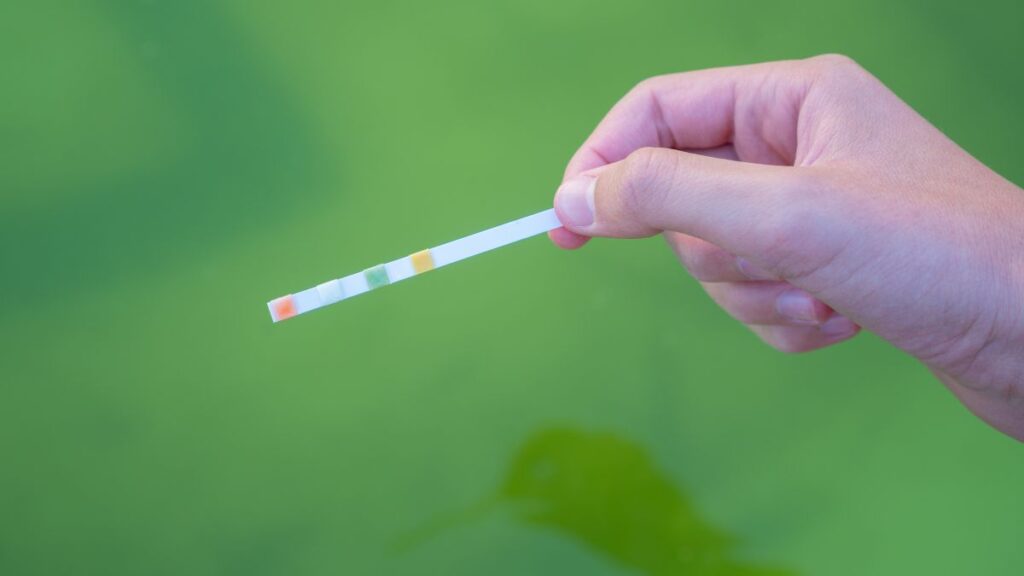
Understanding the Varieties of Green Pool Water
Swimming pools can exhibit three distinct shades of green water: light green, dark green, and greenish-black.
Light Green:
This shade typically indicates a mild algae issue, which isn’t too severe. Light green water often arises from inadequate pool sanitizer levels or improper pool balance maintenance.
Dark Green:
A darker shade of green suggests a higher concentration of algae. Algae of darker green shades can be more troublesome. Given the substantial volume of algae in dark green pool water, you’ll need to put in extra effort to eliminate it.
Greenish-Black:
This is arguably the most problematic type of green water. If your pool displays a greenish-black color, it’s teeming with algae. This high concentration of algae is notably resistant to cleaning efforts and can be challenging to remove. Moreover, it can leave unsightly stains on your pool’s walls and floor.
Is it Safe to Swim in a Green Pool?
You’re standing at the edge of your green-tinted pool, the sun beating down on your back, and you’re wondering, “Is green pool water safe? Can I swim in green pool water?” The answer isn’t as straightforward as you might hope.
The safety of swimming in a green pool largely depends on the reason behind the green color. If it’s due to a high concentration of algae, you might want to think twice before diving in. Algae in pools can create a slippery surface, increasing the risk of accidents. But the concerns don’t stop there.
Algae themselves aren’t typically harmful to humans, but they create an environment where harmful bacteria like E. coli can thrive. These bacteria can cause a variety of health issues, from minor ear and skin infections to more serious gastrointestinal illnesses.
Here are some potential health risks associated with swimming in green pools:
- Skin Irritations: Algae and the bacteria they harbor can cause skin rashes and irritations. If you have sensitive skin, you’re at a higher risk.
- Eye Infections: The water in a green pool can cause conjunctivitis, also known as pink eye.
- Ear Infections: Swimmer’s ear is a common infection caused by bacteria found in water, and it can be more prevalent in green pools.
- Respiratory Issues: Inhaling water droplets from a green pool can lead to respiratory problems, especially for those with pre-existing conditions like asthma.
- Gastrointestinal Illnesses: Accidentally swallowing water from a green pool can lead to stomach upset, diarrhea, and other gastrointestinal issues.
The Difference Between Green Pools and Green Lakes
You’ve probably noticed that people often swim in green lakes without a second thought, yet hesitate when faced with a green pool. You might be wondering, “Why is it safe to swim in a green lake but not a green pool?” The answer lies in the nature of these two bodies of water and how they handle impurities.
Green Pools
When your pool turns green, it’s usually a sign of algae growth, often due to imbalanced chlorine levels or poor pool maintenance. Algae in pools can create a breeding ground for harmful bacteria, leading to potential health risks. From skin and eye infections to more serious gastrointestinal illnesses, swimming in a green pool can expose you to a host of unpleasant conditions.
Moreover, a green pool indicates a problem with the pool’s sanitation system. Unlike natural bodies of water, pools rely on a carefully balanced chemical system to keep the water clean and safe. A green pool signals that this system is out of balance, and the water may not be safe for swimming.
Green Lakes
On the other hand, a green lake is a different story. Lakes are natural bodies of water with their own ecosystems. They have natural ways to filter out impurities and maintain balance. The green color in lakes is often due to the presence of algae, just like in pools. However, the types of algae found in lakes are usually different from those in pools.
In a lake, algae are part of the natural food chain. They provide food for a variety of organisms and help to oxygenate the water. While some types of algae can be harmful, most are harmless to humans.
However, it’s important to note that not all green lakes are safe to swim in. Some lakes can experience harmful algal blooms, often due to pollution or other environmental factors. These blooms can produce toxins that are harmful to humans and animals.
How to Identify Unsafe Green Pools
You’re eager for a swim, but the sight of your green pool gives you pause. Is it safe? How can you tell? Recognizing the signs of an unsafe green pool is crucial for your health and safety. Let’s explore what to look out for and how chemical levels play a role in determining pool safety.
Signs of an Unsafe Green Pool
A green pool is a clear sign that something is off, but there are other indicators that your pool might be unsafe for a dip. Here’s what to watch out for:
- Murky Water: If you can’t see the bottom of your pool, it’s a sign that algae or other contaminants are present in high numbers. Murky water can also hide other hazards, like broken glass or sharp objects.
- Unpleasant Odors: A well-maintained pool should have little to no odor. A strong, unpleasant smell is a sign that your pool’s chemistry is off and potentially harmful bacteria are thriving.
- Slimy Surfaces: Algae in pools can create a slimy film on the pool’s surfaces. If the pool walls or floor feel slippery, it’s a sign that algae are present.
- Skin Irritation: If you or others have experienced skin irritation after swimming, it’s a sign that the pool water is not safe.
The Role of Chemical Levels in Pool Safety
Chemical levels are a key factor in maintaining pool safety. They ensure that harmful bacteria and algae are kept in check, and the pool water is safe for swimming. Here are some important chemical levels to monitor:
- Chlorine Levels: Chlorine is a sanitizer that kills bacteria and algae. Insufficient chlorine levels can lead to algae growth and make the pool unsafe.
- pH Levels: The pH level measures how acidic or basic the water is. A balanced pH level (between 7.2 and 7.8) ensures that the chlorine works effectively.
- Alkalinity: Alkalinity acts as a pH buffer to prevent drastic changes in pH. If the alkalinity is too low or too high, it can cause pH levels to fluctuate, affecting the effectiveness of the chlorine.
- Calcium Hardness: High calcium hardness can lead to cloudy water and scale formation on your pool surfaces. Low calcium hardness can cause corrosion of pool equipment.
Regular pool water testing is crucial to monitor these chemical levels and maintain pool safety. If you notice any changes in your pool’s appearance, smell, or feel, test the water immediately.
Remember, a green pool is more than just an eyesore—it’s a health risk. By learning to identify the signs of an unsafe green pool and understanding the role of chemical levels in pool safety, you can ensure a safe and enjoyable swimming experience. After all, your pool should be a source of fun and relaxation, not worry.
How to Treat a Green Pool
So, you’ve found yourself with a green pool. It’s not the most inviting sight, but don’t worry. With the right steps, you can restore your pool to its former glory. Let’s explore how you can treat a green pool and make it safe for swimming again.
Step 1: Remove Debris
Start by removing any visible debris from your pool. Leaves, twigs, and other organic matter can contribute to algae growth. Use a pool net to scoop out as much debris as possible.
Step 2: Brush and Vacuum
Next, give your pool a thorough cleaning. Brush the walls and floor of the pool to dislodge any algae. Then, vacuum the pool to remove the dislodged algae and any other debris. Remember, algae can make surfaces slippery, so be careful if you’re getting into the pool to do this.
Step 3: Test and Adjust Chemical Levels
Now, it’s time to test your pool water. You’ll want to check the pH, alkalinity, and chlorine levels. The ideal pH level is between 7.2 and 7.8, and the alkalinity should be between 80 and 120 ppm. Adjust these levels as necessary using pool chemicals.
Once your pH and alkalinity are balanced, focus on the chlorine. You’ll need to shock your pool, which involves adding a large amount of chlorine to kill off the algae. Follow the instructions on your pool shock product to ensure you’re using the correct amount.
Step 4: Run Your Filter
After shocking your pool, run your filter continuously for at least 24 hours. This will help to clear out the dead algae and other contaminants from your pool.
Step 5: Repeat as Necessary
You may need to repeat the brushing, vacuuming, and shocking process a few times to completely clear your pool. Be patient—it can take time to eliminate a severe algae bloom.
Step 6: Regular Maintenance
Once your pool is clear, keep it that way with regular maintenance. This includes testing your water of pool weekly, maintaining proper chemical levels, and cleaning your pool regularly.
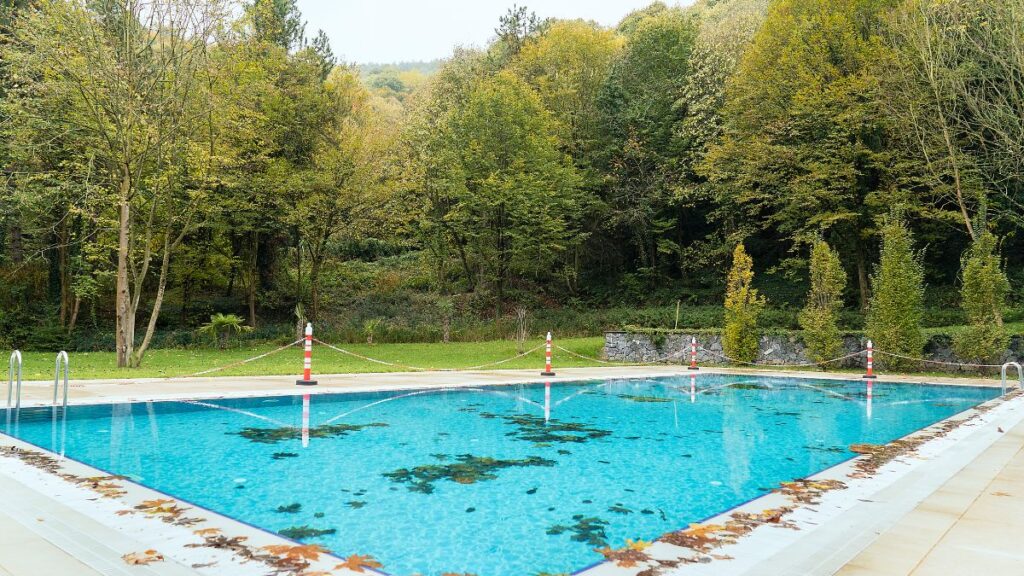
Guidelines for Safely Swimming in a Green Pool
Swimming in a green pool can be intimidating, but by following certain precautions, you can ensure your safety. Here are some tips to keep in mind:
Protect Your Eyes and Skin
Avoid ingesting the pool water or letting it get into your eyes as it can cause irritation and increase the risk of infection. Wearing swim goggles and protective clothing can shield you from potentially harmful bacteria or other contaminants in the water.
Use Chlorine for Sanitization
Chlorine tablets or granules can be used to sanitize the pool. Chlorine kills bacteria, making the pool safer for swimming. However, ensure that chlorine levels are professionally tested before entering the pool. Overly high concentrations of chlorine can lead to skin irritation and other health hazards.
Regularly Test the Pool’s pH Levels
Regular basis pH testing is also crucial. Fluctuations in pH levels can cause problems like eye stinging or hair color fading after multiple exposures.
Use Algaecides
Consider using algaecides, which are chemical compounds designed to kill algae in pools. Depending on the severity of the algae problem, use algaecides at least twice a year, preferably before the summer season begins. This will prevent additional complications while enjoying your pool.
Frequently Asked Questions About Can You Swim in a Green Pool
Is it safe to swim in a pool that is green?
Typically, it’s not safe to swim in a green pool. The green color indicates the presence of algae, which can create an environment where harmful bacteria thrive. These bacteria can lead to a variety of health issues, from minor skin irritations to more serious infections.
Is it safe to swim in a pool with algae?
Swimming in a pool with algae is not recommended. While algae themselves aren’t typically harmful to humans, they can make the pool surfaces slippery, increasing the risk of accidents. Moreover, algae can harbor harmful bacteria, leading to potential health risks.
Can chlorine clear a green pool?
Yes, chlorine can clear a green pool. Chlorine is a sanitizer that kills algae and bacteria. If your pool is green, it’s likely due to a lack of sufficient chlorine. Shocking your pool, or adding a large amount of chlorine, can help kill off the algae and clear the water. However, it’s important to balance the chlorine levels to ensure the water is safe for swimming.
How do I know if my pool is safe to swim in?
You can determine if your pool is safe to swim in by regularly testing the water. You’ll want to check the chlorine, pH, and alkalinity levels. Clear water, no unpleasant odors, and balanced chemical levels are good indicators that your pool is safe. If your pool is green, has a strong smell, or the chemical levels are off, it’s best to avoid swimming until these issues are addressed.



